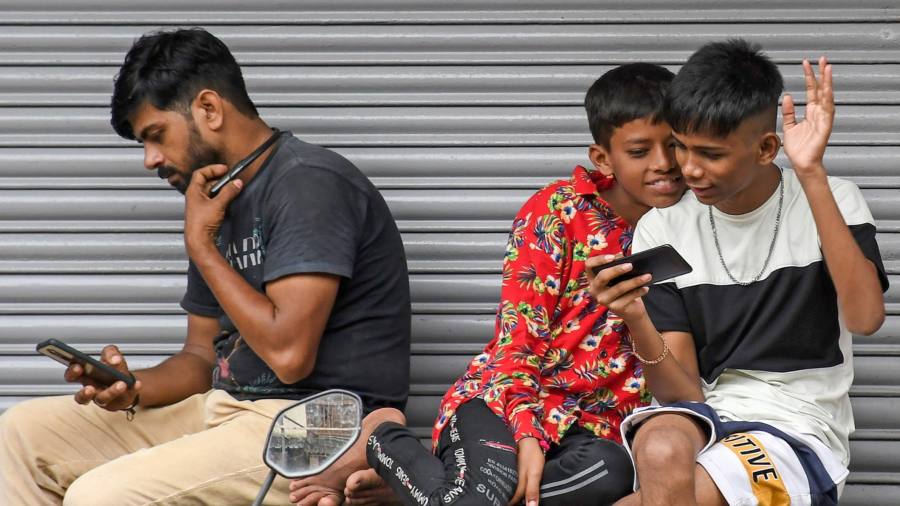
In September 2017, India’s government formed a task force called 5G India 2020 to push for the “early deployment” of the telecoms technology in the country. The timeline was a shade optimistic. Pandemic-struck 2020 came and went: prime minister Narendra Modi launched 5G in India only last month.
With companies targeting last week’s Diwali holiday for their initial rollouts, 5G is the latest battle for India’s network operators in their campaign to dominate the fast growing mobile market.
The fight started in 2016 with the arrival of billionaire Mukesh Ambani’s phone network Jio. Determined to capture as much of India’s data as possible, Ambani’s Reliance invested deeply in the network, besting incumbents in a cut-throat price war. In 2019, Reliance said it had invested Rs3.5tn ($48bn at an average exchange rate over the past five years) in the network.
Jio dealt devastating blows to rivals, triggering consolidation of the fragmented market. In 2015, before Jio arrived, no single company held more than 24 per cent of India’s mobile network market share, according to official statistics. Today it is almost a two-horse race — Jio commands 36 per cent, with its closest rival Bharti Airtel at 32 per cent, and under pressure Vodafone Idea trailing behind.
In a sign of 5G’s centrality to Ambani’s strategy, he was not shy to splash out at India’s delayed 5G spectrum auctions this August — Jio spent $11bn, out of a total $19bn, to acquire the largest spectrum, and plans for Jio’s 5G rollout were at the centre of Reliance’s annual general meeting later that month.
In a twist, fellow billionaire Gautam Adani is making his first foray into telecoms with 5G — although he is sticking with enterprise rather than consumer business for now.
India is hungry for data. According to Reliance, Jio has more than 420mn mobile broadband subscribers who each gobble up 20GB of broadband data every month. That’s well above the global monthly average consumption of 12GB, according to communications equipment maker Ericsson, which says India has the second highest data traffic per smartphone in the world.
Ultra-cheap mobile data has driven an online revolution in India, with internet connections speeding up everything from government services to payments. Optimists believe that 5G, which moves information faster than 4G, will eventually offer new ways for Indian consumers and businesses to use the internet — from autonomous cars to gaming to telemedicine.
As India adopts 5G “you’ll find a lot of creativity unleashed”, says Mahendra Nahata, managing director of Indian communications technology company HFCL. “All this put together will be a whole good impetus to the economy.”
5G will be a high-profile test for Ambani’s eldest son Akash, in his new role as Jio’s chair. Given his father’s bombastic ambitions, it’s a daunting task.
“With Jio 5G, we will connect everyone, everyplace and everything with the highest quality and most affordable data,” Mukesh Ambani told shareholders at the company’s annual meeting in August. “Jio 5G will be the world’s largest and most advanced 5G network.”
Ambani pledged Rs2tn ($24bn), over an unspecified timeframe, to build a pan-India 5G network, promised 5G connection would reach across the vast nation by December 2023 and trailed a homegrown 5G technology developed by Jio engineers.
When Jio and Bharti Airtel introduced 5G in several major cities in time for the Diwali holiday, as many as 67mn smartphones in India were ready to use 5G, according to Prabhu Ram, industry intelligence head at consultancy CyberMedia Research, who says this relatively high penetration should help boost uptake.
And Ram says that for Jio, 5G isn’t just about faster connections for their mobile customers: “The investment they are making in 5G would translate into a significant impetus for their businesses across education and healthcare which has been made under the Jio platforms umbrella over the last couple of years.”
Ericsson has forecast that 5G’s share of worldwide mobile data traffic will swell from 10 per cent in 2021 to 60 per cent by 2027. A world map of 5G coverage shows the continents of Europe and North America are dense with 5G networks — likewise Thailand and Japan.
But the huge sums being ploughed into India’s fledgling 5G network may force price rises. Reporting earnings on Monday, Bharti Airtel chief executive Gopal Vittal said the company was concerned about pricing in India “that is the lowest in the world”. “Given the large investments required to drive digital adoption in India we believe there is a need for tariff correction,” he said.